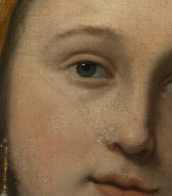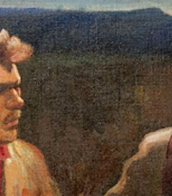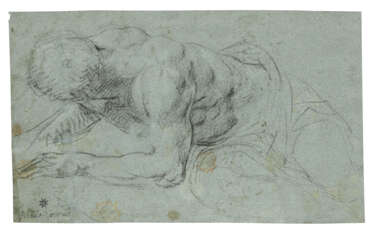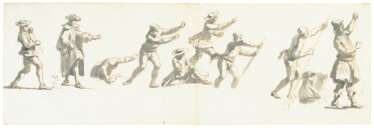venetian school

Alessandro Longhi was a distinguished Venetian portrait painter and printmaker, renowned for his artistry in etching and his significant contributions to the Venetian art scene. Born, trained, and having spent his entire life in Venice, Alessandro Longhi emerged as a pivotal figure in the city's artistic landscape, following in the footsteps of his father, Pietro Longhi. His works, especially his oil portraits, encapsulate the essence of Venetian nobility, capturing the grandeur and elegance of his subjects with remarkable finesse.
One of Alessandro Longhi's notable contributions to art and culture is his "Compendio delle vite de' pittori veneziani istorici," a comprehensive compendium detailing the lives and works of esteemed Venetian painters of his era. This work not only underscores his prowess in etching but also highlights his role as a chronicler of Venice's rich artistic heritage.
Alessandro Longhi's portraits, characterized by their meticulous detail and vibrant realism, are celebrated for their depth and vitality. Among his notable works are portraits of prominent figures such as Carlo Goldoni and Giacomo Casanova, as well as other Venetian nobles and statesmen, which have been lauded for their artistic merit and historical significance. His creations, such as "Painting and Merit," an etching that captures the interplay of art and virtue, exemplify his skill in using art to convey complex themes and narratives.
For art collectors and enthusiasts, Alessandro Longhi's works offer a window into the soul of 18th-century Venice, embodying the city's cultural opulence and the artistic brilliance of its inhabitants. His legacy continues to inspire and captivate audiences, making his artworks treasured possessions in the realms of art and antiques.
For those interested in the intersection of art, history, and culture, and wishing to stay informed about new sales and auction events related to Alessandro Longhi's works, subscribing for updates is a prudent choice. This ensures that aficionados and collectors alike remain abreast of the latest opportunities to engage with and acquire pieces of Longhi's enduring legacy.


Tiziano Vecellio, an Italian Renaissance painter from Venice, stands out as a pivotal figure in the art world, renowned for his versatility across various genres like portraits, landscapes, and religious subjects. His influence on the development of Western art, particularly through his revolutionary use of color, is profound and long-lasting.
Born around 1488/90 in Pieve di Cadore, part of the then Republic of Venice, Titian's talent was evident early on. He began his artistic journey in the studio of the Bellini brothers in Venice, later joining forces with Giorgione, another influential painter of the time. This collaboration marked the beginning of a distinguished career that would see Titian become the most sought-after painter in Europe, working for nobility, the Habsburgs, and the papacy.
Titian's style evolved significantly throughout his career. He initially gained recognition for his vibrant, luminous colors and later became famous for his loose brushwork and subtle tonality. This shift was not just a matter of aesthetics but also represented a deeper understanding of color and light. Titian's approach to painting, particularly his use of colore, where he juxtaposed colors to define compositions, contrasted sharply with the line-focused disegno technique of the time. This method contributed significantly to the distinctiveness of Venetian art.
Among his many patrons, Emperor Charles V and his son, Philip II of Spain, were perhaps the most notable. As their official painter, Titian created numerous portraits and mythological works that were celebrated for their psychological depth and expressive use of color. His 'poesie' series for Philip II, including famous works like "Diana and Actaeon," showcased his skill in portraying mythological narratives with a sense of drama and sensuality.
Titian's later works, created in the 1560s and 1570s, are particularly revered for their experimental nature, pushing his art towards what has been termed 'magic impressionism'. These works, like "The Death of Actaeon" and the unfinished "Pietà", demonstrate a radical departure from his earlier style and reflect a continued evolution even in his later years.
For art collectors and experts, Titian's oeuvre represents a crucial link in the history of European art, illustrating the transition from the Renaissance to a more modern, expressive form of painting. His mastery of color and light, combined with his ability to convey deep emotional resonance, continues to influence artists and captivate viewers centuries later.
To stay updated on artworks and auction events related to Tiziano Vecelli, consider signing up for updates. This subscription will ensure you are informed about new product sales and auction events related to this remarkable artist.















































































